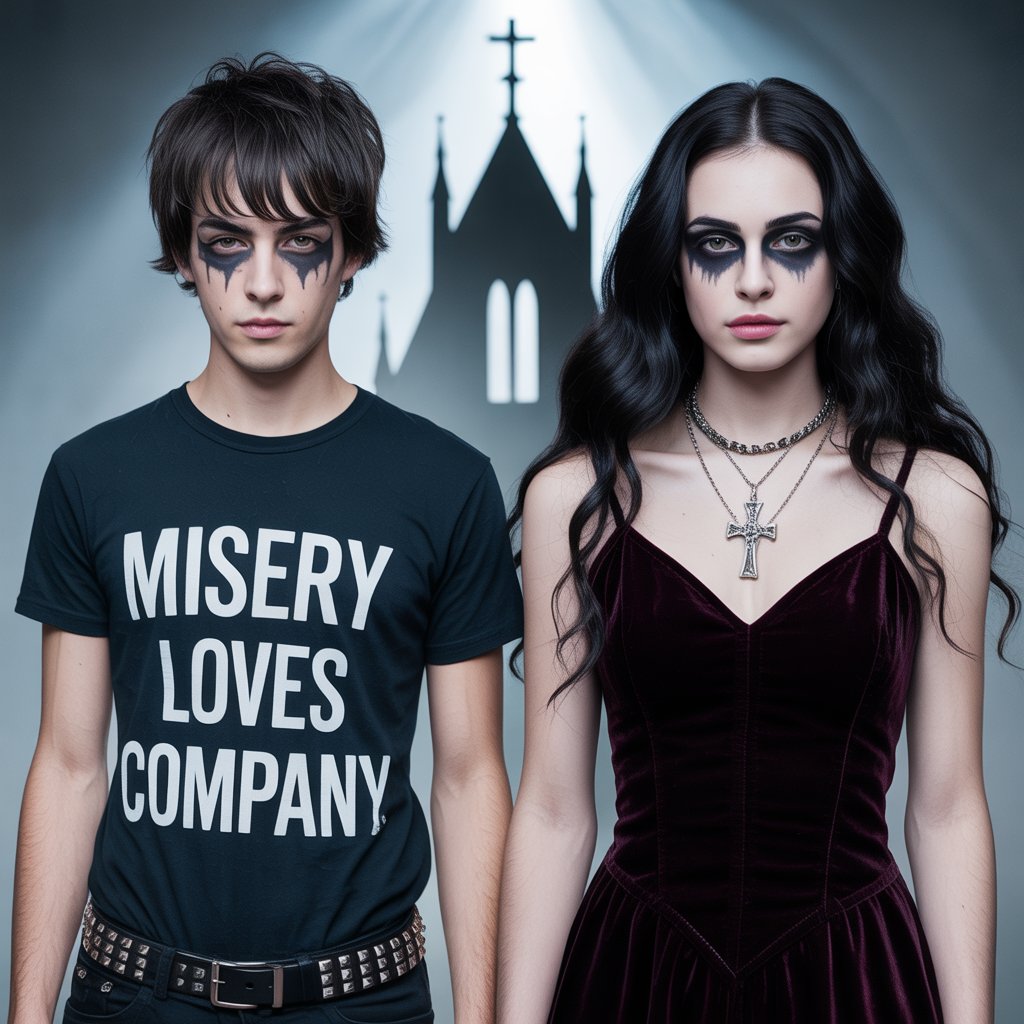Emo vs Goth – 10 Ways to Know the Difference

The debate of Emo vs Goth has been around for years, often leaving people confused about where the line between the two subcultures really lies. While they share some similarities, it’s important to understand that Emo and Goth are two unique identities with their own style, music, and philosophy.
Although both subcultures have their roots in punk rock, their expression, outlook, and appearance differ in many ways. Emo reflects emotional intensity and personal expression, while Goth leans toward darker, more mysterious themes influenced by literature, art, and the macabre. Let’s dive into 10 key differences between them.
1. Historical Origins
Goth emerged in the late 1970s and 80s as a subculture of post-punk music, heavily inspired by melancholy, literature, and dark aesthetics. Bands like The Cure and Bauhaus shaped this movement. Emo, short for “emotional hardcore,” appeared later in the mid-80s and grew in the 90s, focusing on emotional expression and a more raw, personal form of punk music.
2. Type of Music
Emo music is emotionally charged, with lyrics often reflecting personal struggles, heartbreak, and teenage angst. Bands like My Chemical Romance, Fall Out Boy, and Rites of Spring made it popular. Goth, on the other hand, carries a haunting, darker sound with lyrics inspired by themes of death, mysticism, and existential thought, often backed by heavy bass and atmospheric melodies.
3. Themes and Inspiration
Goths are deeply connected with themes of darkness, witchcraft, and even vampirism, often celebrating a mysterious, spiritual aesthetic. Emos are different — while they also wear black, their themes focus on emotions, self-expression, and a mix of light and dark moods, sometimes highlighted by bright or neon accents.
4. Color Preference
Both love black, but in very different ways. Goth fashion is almost entirely black, incorporating lace, velvet, and leather for dramatic effect. Emo outfits, while rooted in black, also include pops of bright colors like pink, purple, or neon shades to add contrast and individuality.
5. Appearance and Clothing
At first glance, they may seem similar, but the details set them apart. Emo fashion includes skinny jeans, band T-shirts, striped tops, studded belts, scarves, and Converse shoes. Their accessories often include pins, patches, and messenger bags. Goth style leans toward long skirts, corsets, lace gloves, and dramatic jewelry featuring symbols like crosses, moons, or skulls.

6. Makeup Styles
Goth makeup is bold and theatrical — pale foundation, dark eyeshadow, heavy eyeliner, and black lipstick. It mimics an otherworldly or undead look. Emo makeup, however, is less extreme but still distinctive, with dark eyeliner, side-swept bangs covering one eye, and a softer, more emotional appearance.
7. Behavior and Attitude
Emo personalities are often seen as expressive, emotional, and outspoken about their feelings. They openly embrace sadness, heartbreak, or sensitivity. Goths are more introverted, thoughtful, and mysterious, preferring to reflect on philosophical or spiritual ideas in solitude.
8. Bands and Icons
Key Emo bands: My Chemical Romance, Fall Out Boy, Rites of Spring.
Key Goth bands: Bauhaus, The Cure, Joy Division.
9. Cultural Identity
Emo culture is about embracing individuality and personal struggle. Accessories and hairstyles — especially layered cuts and long fringes — are essential. Goth culture, meanwhile, is more rooted in history and literature, drawing inspiration from Victorian fashion, Gothic architecture, and dark romanticism.
10. Popularity
Both subcultures gained global recognition. Emo rose strongly in the US before spreading to Europe, becoming especially popular among teens. Goth, on the other hand, has maintained a consistent following worldwide, though often in smaller communities.
Final Thoughts
While both Emo and Goth stem from punk rock, they express very different worldviews. Emo focuses on emotional vulnerability and self-expression, while Goth embraces darkness, philosophy, and a dramatic aesthetic. In the end, both subcultures have left a lasting mark on alternative culture — but it’s clear that despite their similarities, they are not the same.
So, where do you belong? Team Emo, team Goth, or maybe a mix of both?
Recent Posts
Categories
Related Articles
Ultimate Style Guide: Emo & Pop Punk Fashion with Black Emo Pants and Tripp Pants
Emo and Pop Punk aren’t just music genres—they’re entire lifestyles. From dark,...
ByemopantsOctober 6, 2025The Famous 2000s Emo Fashion — Is It Back with Emo Pants?
The 2000s were iconic for many reasons, but nothing defined that era...
ByemopantsOctober 6, 2025What It Really Means to Be Emo: Style, Culture & the Power of Emo Pants
Emo isn’t just a genre of music—it’s a way of life, a...
ByemopantsOctober 6, 2025Free Music Festivals in California & The Perfect Vibe with Emo Pants
California is more than beaches, palm trees, and Hollywood stars—it’s also home...
ByemopantsOctober 6, 2025















Leave a comment